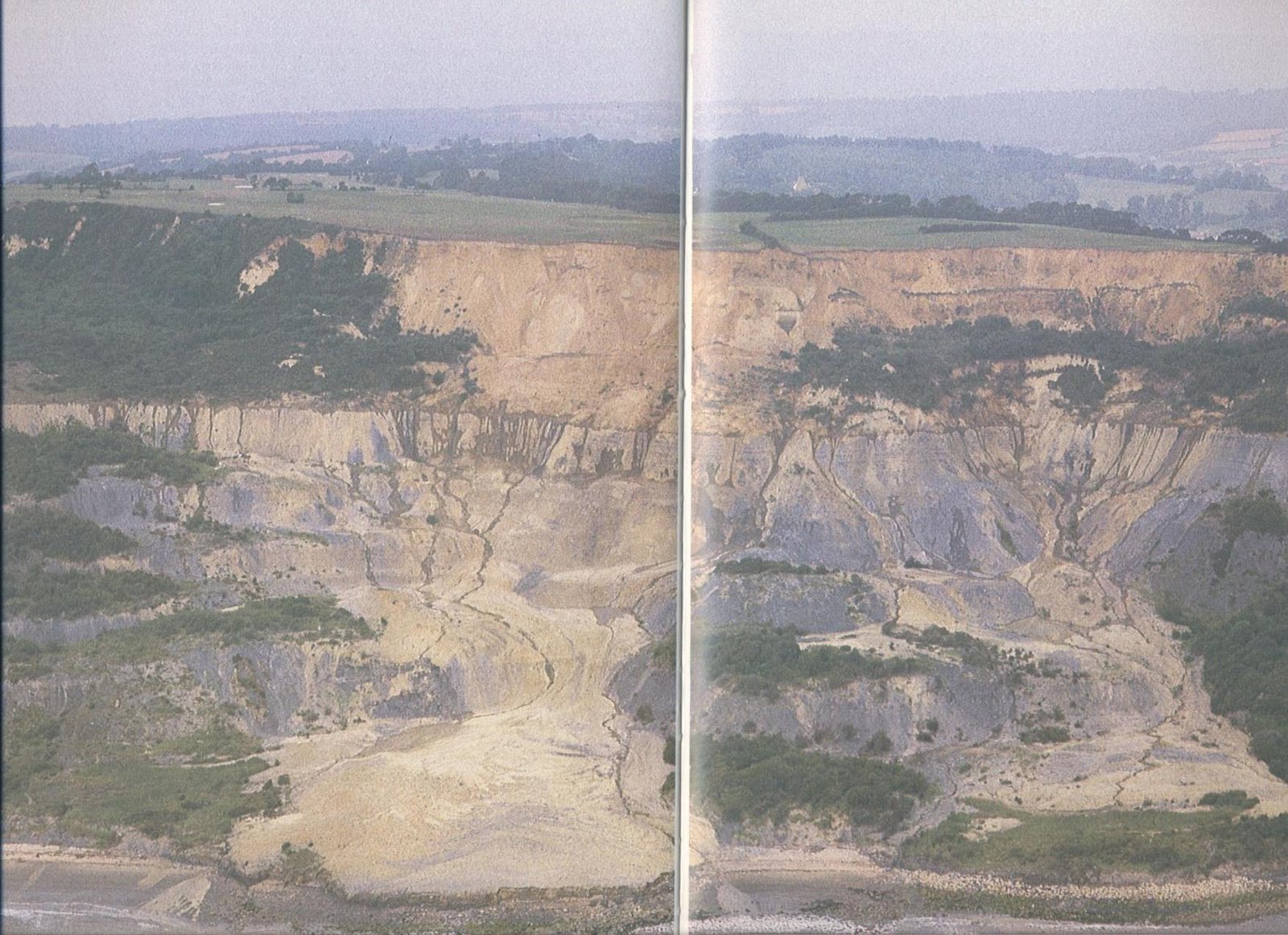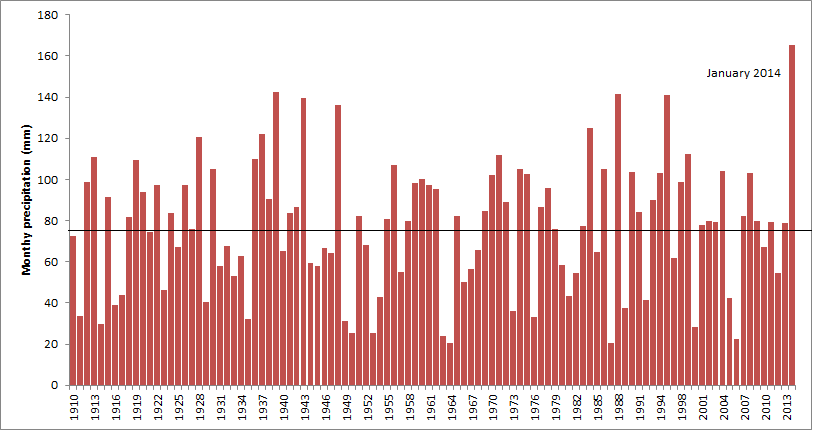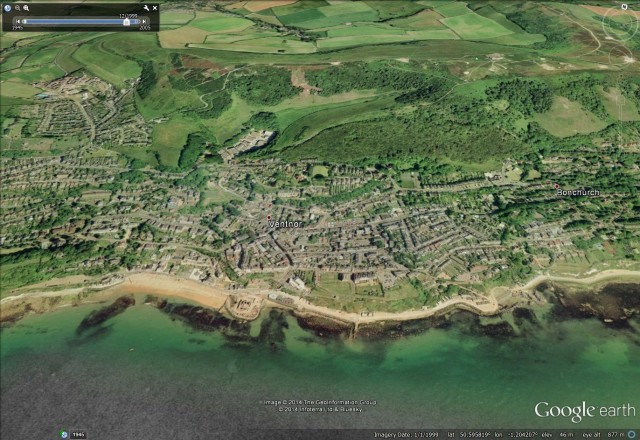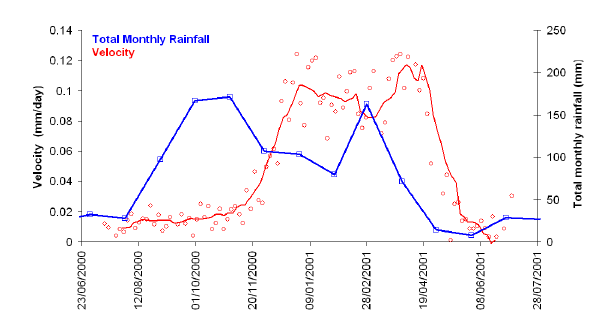11 February 2014
Southern England: the potential for movement in deep-seated landslides
Posted by Dave Petley
Extreme rainfall in southern England
Southern England is currently undergoing an extraordinary period of exceptional rainfall, especially in the south, which is causing floods on an unprecedented scale. This rainfall, which is likely to be a consequence of climate change, shows no signs of abating, with further heavy falls expected over the next few days. Not surprisingly there have been many landslides, especially on the coast and along railway lines, and more can be expected. The UK Met Office provides monthly precipitation data for Southern England . I have downloaded the data and plotted the monthly time series from 1910 (the start of the dataset):
..
The horizontal line in the long-term mean value (77.3 mm). The 2014 total, at 165.4 mm, is 2.8 standard deviations from the mean – a truly exceptional value. And of course it is still raining, such that since the end of January the floods have got much, much worse.
Deep-seated landslides in southern England
From a landslide perspective an interesting aspect of this is the likely behaviour over the next two or three months of the deep-seated landslide systems that lie along the southern coast of the UK. So far there have been few reports of these landslides showing substantial movements. However, typically deep-seated landslides show a long lag between the rainfall and the activation of movement. I can illustrate this with a dataset for a very deep-seated landslide on the Isle of Wight on the very southern tip of the UK. The landslide, at Ventnor (shown below), is very well known and has been extensively studied. It sits under most of the town:
..
My former student, Jon Carey, studied this landslide for his PhD. In particular he monitored a phase of movement of the landslide complex from a decade ago. His thesis, which is excellent, is available for download from the Durham ethesis site. The landslide moves slowly – very slowly indeed in fact – so the level of risk for the population is low, although the town does suffer some periodic damage to buildings. The landslide is carefully monitored. This is a graph of movement rate of the landslide compared with monthly rainfall from 2000-2001:
..
The monthly rainfall peaked in October and November 2000, and then fell to lower levels in the period November to January. However, the movement of the landslide only really started to accelerate in November 2001 and reached a maximum in early January. It then continued to move at a higher rate right through to the end of April, probably helped by a further wet month in February. So the lag between the rainfall and the movement was two to three months
Now, as noted above, for this landslide the movement rates are very slow (typically 0.1 mm per day), so the impact is low. However, there are many other deep-seated landslides in the UK that can show much higher rates of movement – this is the spectacular (and fortunately uninhabited) Black Ven landslide in Dorset (see this post on the old home of this blog for a description of this landslide):

Photograph of the Black Ven landslide in Dorset. From Brunsden et al 1988: Landshapes. David and Charles, Newton Abbot.
..
So, we might expect to see some interesting landslide movement on the next few weeks and even months as ground water levels continue to rise in these deep-seated landslide complexes.





 Dave Petley is the Vice-Chancellor of the University of Hull in the United Kingdom. His blog provides commentary and analysis of landslide events occurring worldwide, including the landslides themselves, latest research, and conferences and meetings.
Dave Petley is the Vice-Chancellor of the University of Hull in the United Kingdom. His blog provides commentary and analysis of landslide events occurring worldwide, including the landslides themselves, latest research, and conferences and meetings.